7. Shultes (Bakur Bakuradze, 2008)
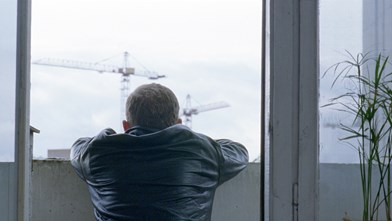
Shultes, the work of Georgian filmmaker Bakur Bakuradze, is so stripped down and scant on dialogue that at times it feels like cinéma vérité. The movie does not have a plot per se, so much as a series of snapshots into the life of a man living one day at a time. This is what makes it so wonderful.
The main character is an uncommunicative pickpocket, who wanders the streets of Moscow with the sole aim of finding easy targets for quick cash. Caroming from metro trains, to cafes, to bath houses, Shultes is found in all facets of contemporary Russian life supporting a meager existence through his illicit trade. He sits with his mother in her cramped apartment. He visits friends. He swipes wallets from bystanders.
Eventually, he takes a young homeless boy as an accomplice. The most jarring sequence comes at the film’s denouement, when he covers for the boy and allows himself to be beaten up by a group of friends who assume he stole their things.
It is particularly challenging for films to depict banality without it becoming tiresome. Shultes holds onto the viewer through constant tension (will the character get caught for his crimes?), but also by portraying the minutiae of life in Moscow with astonishing accuracy. The story is unique, and the film is highly enjoyable.
6. House of Fools (Andrei Konchalovsky, 2002)
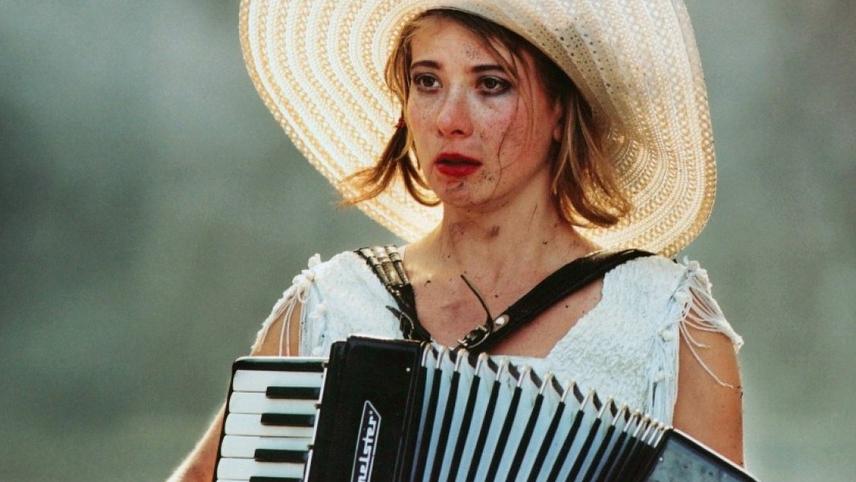
In a film as unflinchingly anti-war as Paths of Glory, this work by Andrei Konchalovsky is a black comedy about patients in a psychiatric hospital during the first Chechen War. Though a completely unique narrative, it is considered a remake of the French film King of Hearts, and was almost unavoidably compared to One flew Over the Cuckoo’s Nest.
On the border between Chechnya and the rest of Russia, an institution is abandoned by its staff for fear of bombings. This leaves the inmates to quite literally run the asylum. One of the inmates is Zhanna, who believes that she is the soulmate of Canadian pop star Bryan Adams. The abandoned hospital is overtaken by a group of runaway Chechen rebels, one of whom takes a liking to Zhanna. Their budding romance never comes to fruition, but in the progression of the story many horrors of the war come to light.
House of Fools, particularly in the US, was met with generally negative critical reception upon its release. Some critics took exception to the use dark comedy, seeing it as callow and insensitive. However, the film is a powerful indictment of the Chechen conflict that takes no side other than that war is hell and entrenched in corruption. Viewing it as such, House of Fools utilizes black comedy to ponder whether these inmates could ever be as deranged as the system that perpetuated such strife.
5. Wild Field (Mikhail Kalatozishhvili, 2008)
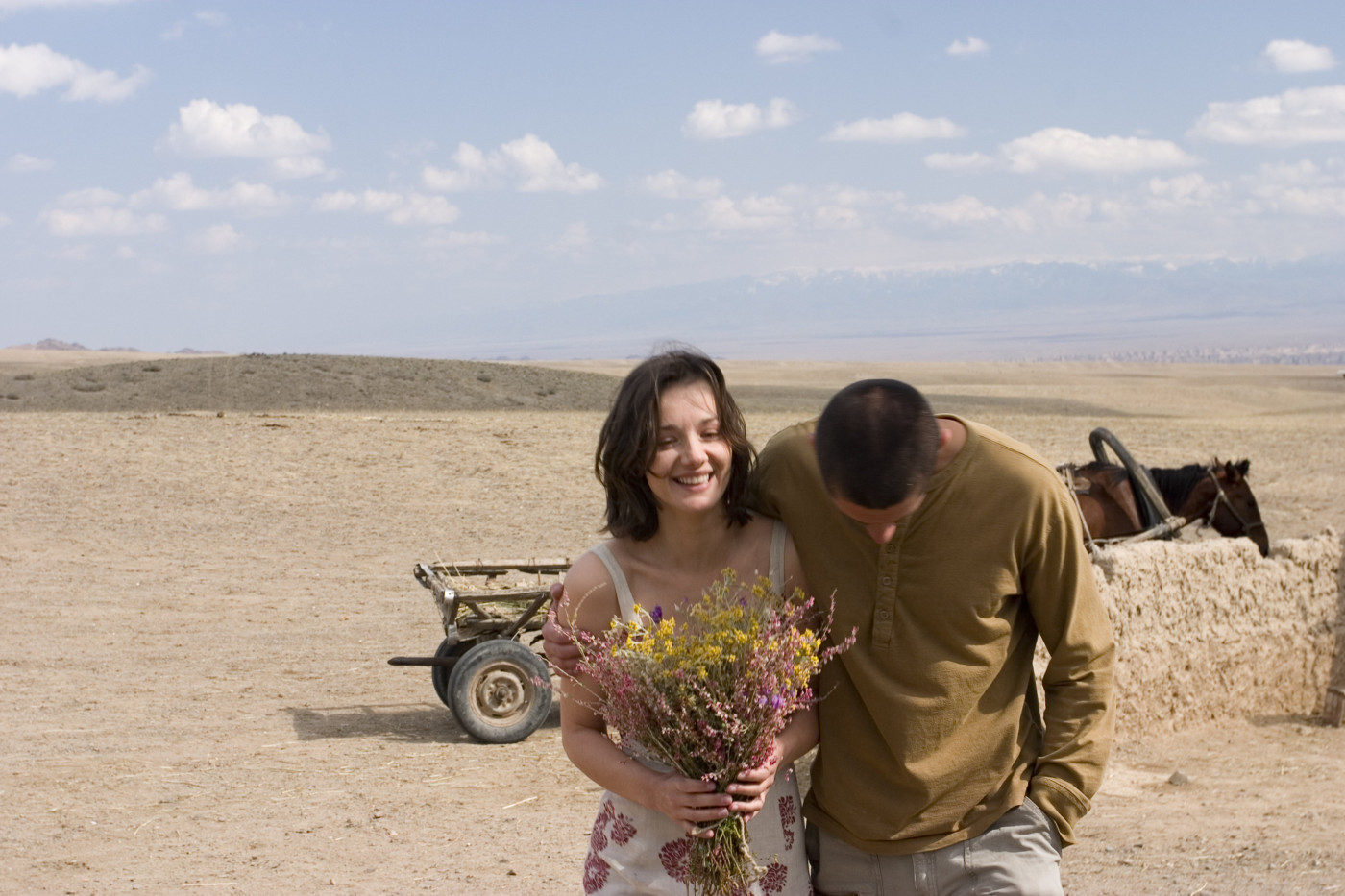
Wild Field exists nominally in an alternate, post-apocalyptic reality that is concerned neither with a linear timeline nor a concrete backstory to reveal what sort of disaster leveled the setting. This is absolutely an art film with an aesthetic as important to the story as the characters. It is lyrical, enigmatic, and stunningly beautiful.
The movie is compartmentalized into a prologue and an epilogue with nine ‘episodes’ and interludes in between. The constant throughout is Mitia, who exists listlessly in desolate fields. Each episode details an archetypal visitor such as a sheriff, an alcoholic and a shepherd with a sickly animal. Each of these visits present their own dilemmas that offer wrinkles in Mitia’s otherwise mundane life. The rhythmic movement through each sequence gives the film a poetic feel.
Wild Field is heavily influenced by Russian classics such as Stalker. Its weighty ambitions are actualized though the tight directions and the dazzling cinematography of Pyotr Dukhovskoy. The story is ambiguous and esoteric, leaving room to interpret its vast symbolism. All of this culminates in a memorable and worthwhile cinematic experience.
4. Russian Ark (Aleksandr Sokhurov, 2002)
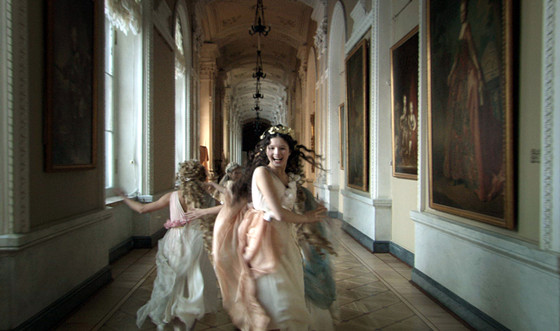
Creating a film out of one continuous shot is a concept used quite sparingly in the history of film. Aleksandr Sokhurov uses this idea to take the audience on a dreamy tour of St. Petersburg’s Hermitage. Dancing through various periods of Russian history in no particular order, the continuous shot concept helps to create an immersive experience.
Russian Ark begins with a French nobleman entering the Hermitage. He wanders from room to room surveying centuries of Russian art. Other historical figures like Catherine the great surface throughout the film, sometimes breaking the fourth wall with the narrator. The most grandiose scene comes when the camera swoops into a a ballroom filled with hundreds of dancers, festooned in historical regalia. Their choreography is as precise as that of the steadicam used to shoot the film.
In a movie chocked full of highly conceptual pretensions, Sokhurov’s bold creative choices pay off in a mesmerizing vision. Compared favorably with the famous collaboration between Bergman and Tarkovsky Nostalghia, Russian Ark is challenging and highly rewarding.
3. War (Aleksei Balabanov, 2002)
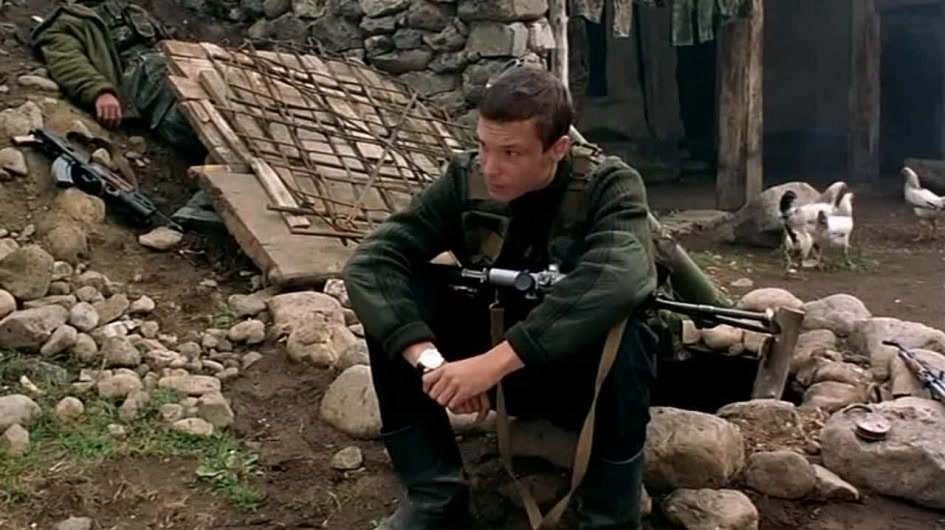
Many of the finest and most deeply psychological war films have come from Russia. The great patriotic war was amongst the most frequent subject of Soviet films in the twentieth century. Although, the moral dimensions of World War II were less complicated than those that the Russian Federation would delve into after it. Aleksei Balabanov adds one of the most grim entries in the canon of Russian war cinema with his portrayal of the Second Chechen conflict.
War is initially introduced as a frame tale where the main character Ivan Yermakov is being interviewed about his experiences. He recalls being held captive in a camp in Chechnya, where the prisoners are confronted with random beheadings. He is joined in the camp by a couple of British actors who were kidnapped while performing Shakespeare in nearby Georgia.
Eventually, Ivan is rescued from the conflict and returns home to find nothing but turmoil. This pushes Ivan back into conflict with his British compatriot. The story continues to unravel as both contend with the horrors of war.
Balabanov faced some criticism for the film being viewed as excessively pro-Russian. While the the film does not offer the Chechen point of view, it also does not portray Russians in a fully heroic light. Ivan has a callous disregard for human life, and the Moscow leadership is exposed as hollow and incompetent. Ultimately, War is a work of stylistic genius, and a crucial study in the horrors of brutal conflict.
2. The Cuckoo (Aleksandr Rogozhkin, 2002)
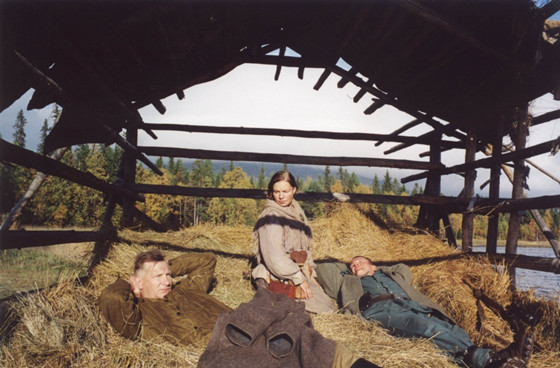
Finding humor in the Second World War is no easy task. Aleksandr Rogozhkin uses a simple device to create a poignant dark comedy: language barrier. In the Cuckoo, both a Soviet and a Nazi soldier find themselves in the exceedingly uncomfortable circumstance of working together.
Ivan is a Soviet commander accused of being a traitor; Veiko is a finnish soldier accused of desertion just days before Finland withdrew its support for the Nazis. As both men flee, they fatefully cross paths at the home of a native Laplander who only speaks Saami. Both feel that this is their only safe haven, and thus a Russian, A Finnish Nazi, and a primitive Saami are all left to coexist without being able to understand anything the other says.
The result is a hilarious comedy of errors. Ivan will only say Poshol Ty! (Russian for fuck off), so that is assumed to be his name. Anni, the beautiful and unassuming Laplander, has no idea of the conflict waging outside of her remote village. Over time, the combatants forge a reluctant bond, until even more misunderstanding turns them apart again.
Any movie with a basic message of ‘we are all brothers’ risks being overly sentimental. In The Cuckoo, though, absurdity reigns supreme in an atypical wartime tale. For successfully juxtaposing the stark realities of the Second World War with silly comedy and brilliant irony, this film is unique and superb.
1. The Return (Andrei Zvyagintsev, 2003)
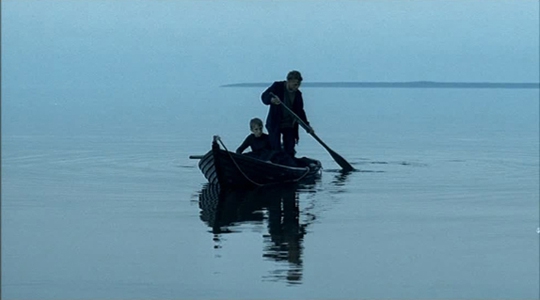
With his first feature, Andrei Zvyagintsev created a mystical yet minimal story that immediately dubbed him the heir apparent to Andrei Tarkovsky. Driven by enigmatic symbolism and Biblical themes, The Return is one of the greatest films in the history of Russian cinema.
One day, young Ivan and Andrei awake to a surprise. Their father, who for reasons unexplained has been absent for over a decade, is sitting at their kitchen table. He suggests that the boys and he go on a fishing trip. The elder Andrei is excited for the reunion, while the younger brother is stooped in resentment.
Nonetheless, the boys drive off with their father. Even as they are excited for adventure, the father’s futile attempts to rekindle their relationships creates painful awkwardness. The younger Ivan increasingly rebuffs his father, and things become frigid between the two as the threesome arrives at their mysterious island destination.
The father cannot assuage the concerns of his son, eventually driving him into a forest where he climbs a flimsy tower. The Father follows him, and in attempt to bring little Ivan down he falls from the tower. His lifeless body lies on the ground with his arms sprawled out in the image of a crucifix. The boys are left alone, still without any knowledge of why the return took place.
The film closes with a slideshow of black and white still photographs from the trip. Deliberately, The Return leaves a number of central questions unanswered. No one knows where the Father came from, and the sense of mystery forces the audience to take the same existential leap of faith that the children do at the beginning of the film.
This is a movie that plays exceptionally well with contradictions between its narrow scope and its grand themes. In the esteemed history of Russian cinema, The Return has earned its reputation as a modern classic.
Author Bio: Michael Watson is an avid fan of all kinds of films. He lives and works in New York City.